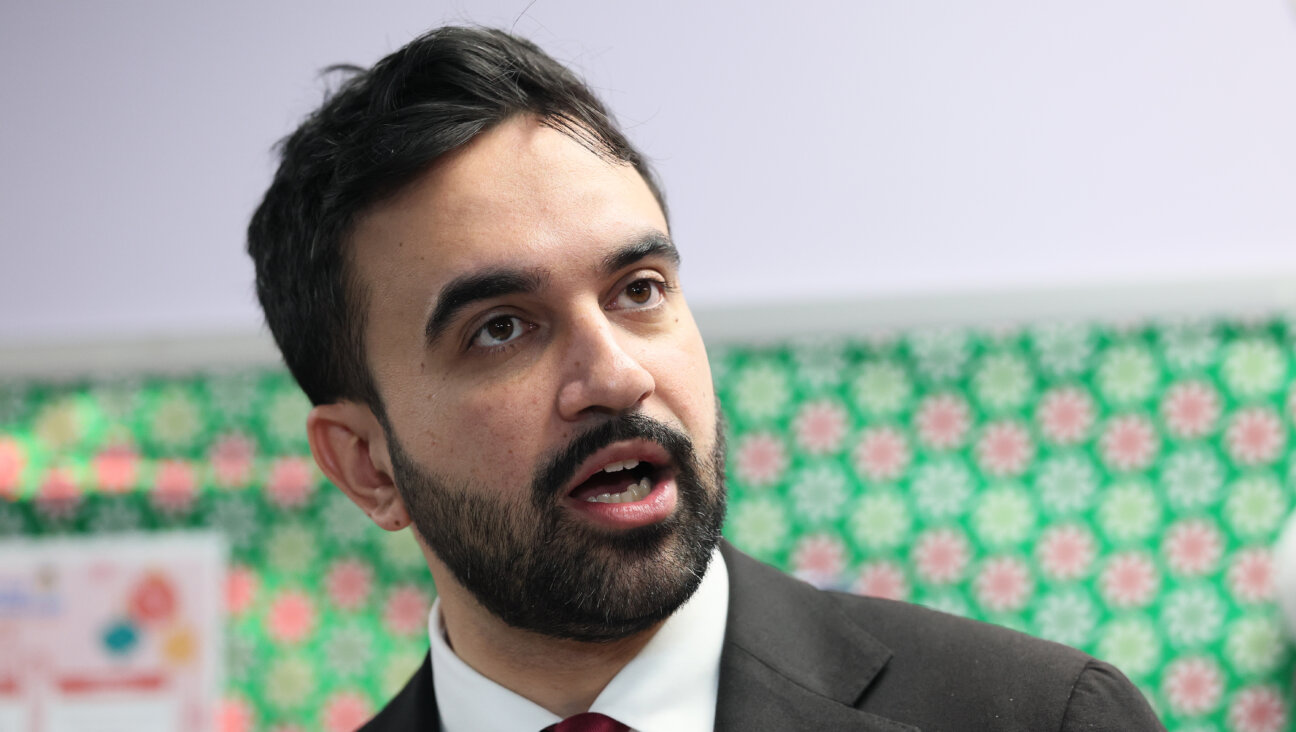Paying Homage to a Mentor
When choreographer Zvi Gotheiner left Israel in 1976 to come to New York, he was a young protégé of his dance teacher, Gertrud Kraus. Often considered to be the first lady of Israeli dance, Kraus taught dance not as a bland curriculum but as the making of art. Despite the fact that Kraus died 30 years ago, Gotheiner still feels the power of her wisdom. From March 14 to March 18, under the sponsorship of Manhattan’s 92nd Street Y, Zvi Gotheiner and Dancers is presenting the premiere of “Gertrud,” a tribute to his late teacher, at the Ailey Citigroup Theater at the Joan Weill Center for Dance, located midtown at 55th Street and Ninth Avenue.
Highly renowned for his choreographic integrity and craftsmanship, Gotheiner uses modern, folk and ballet elements to explore the relationships between people and their environments. “I look for sequential movement that flows organically,” he said in an interview with the Forward. “I feel that when I make movement well, I allow the dancers to create and be human.” During rehearsals, his soft, but deeply resonant voice shepherds the dancers through their formations and phrases.
Born in Israel, Gotheiner excelled as a teenaged violinist with the Young Kibbutzim Orchestra. A performance of the Batsheva Dance Company inspired him to begin dancing at age 17, and shortly thereafter he formed his own dance group. After a high-school performance, Gotheiner recalled, Kraus came backstage and announced “that I was a choreographer and she would teach me how to be an artist.” When he finished his stint in the Israeli army (an experience that Gotheiner says taught him invaluable lessons in survival skills as a dancer in New York), he enrolled in Kraus’s school.
Because both Kraus and Gotheiner had started out as musicians (Kraus often played the piano while teaching dance classes), they shared a deep sense of musicality. “We had a natural bond through the understanding of how movement theory and composition connect to music theory,” Gotheiner said. “She talked about counterpoint, rhythms and canons.” Her other great strength was fostering creativity. “She worked with specific ideas — the construction of a tableau or experimenting with directions,” he added. “She would invent movement and then manipulate it. She was so fluent with choreography, it was amazing.”
In 1935, at the height of her career as a dancer and as the creator of the Ausdruckstanz style (also known as German Expressionist dance) of Central Europe, Kraus, wary of the Nazi regime’s censorship, immigrated to Palestine from Germany. There she founded the People’s Dance Opera Company, which operated from 1941 to 1947; it was the first modern dance troupe in the world associated with an opera house. Later, she directed the Israeli Ballet Theater. As a teacher and choreographer in Israel, she introduced her free style of movement and laid the groundwork for future Israeli dancers.
In “Gertrude,” Gotheiner uses 11 dancers with a characteristic sense of fluidity. He researched his subject through interviews with dozens of people who knew Kraus. He also studied letters and photographs, and discovered some of her drawings of choreographic ideas. “When I knew her, she would fill notebooks with dancing stick figures,” Gotheiner said. Video projections by Ray Roy will display some of Kraus’s drawings as a background to the choreography. Using spoken text, the dancers ask questions and give answers through quotes derived from Kraus’s material. The piece alternately evokes Kraus, her artistic brilliance, her audiences, her students and her impact on Gotheiner’s life.
The commissioned piano score by Scott Killian, a frequent collaborator with Gotheiner, echoes the rebounds and syncopations inherent in the choreographer’s work. Gotheiner favors a loose-limbed but physical style of movement with a tilted axis of the body that is nonetheless firmly rooted in strong ballet technique.
Also featured on this month’s program is Gotheiner’s version of Igor Stravinsky’s “Les Noces,” which premiered last year at Dance Theater Workshop. The choreographer had long admired the complex Stravinsky score for orchestra and chorus, but had previously avoided the challenge. “Stravinsky’s score has such a tremendous force and a wild sense of community,” he said. “It’s boiling with urgency. I waited until now, because I felt I needed to be older to do it. It’s daunting.”
Unlike the original 1923 ballet by Bronislava Nijinska (sister of ballet superstar Vaslav Nijinsky), his “Les Noces” doesn’t concern a Russian peasant wedding. Instead, he has updated it to the 21st century and placed the focus more politically on gay marriage and the often tentative realities of contemporary marriage. Through it all, he embellishes the driving rhythms with a musical craft that would probably please Kraus.
“Working with her was a great invitation to a meaningful life,” Gotheiner said. “After all these years inventing myself, I still find a connection to her. She had an influence on my moral attitude about art and the importance of creating art.”
Joseph Carman is a contributing editor to Dance Magazine and the author of “Round About the Ballet” (Limelight Editions).
















